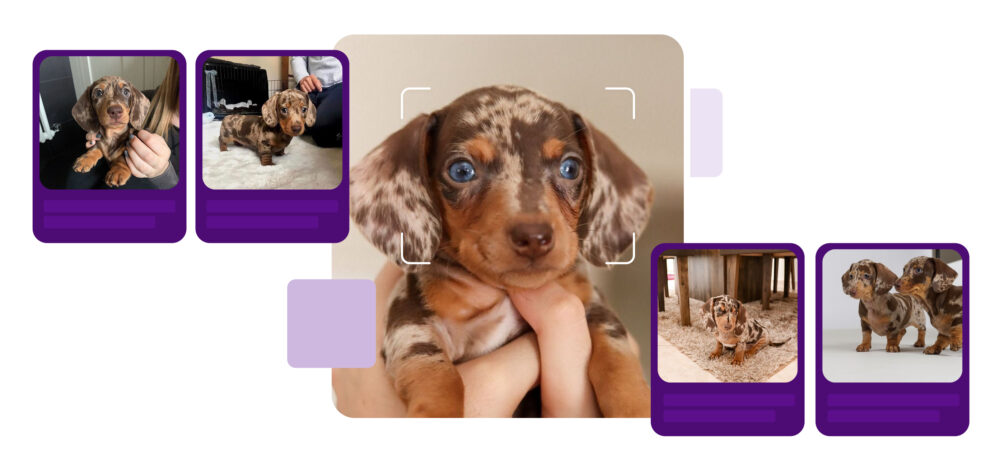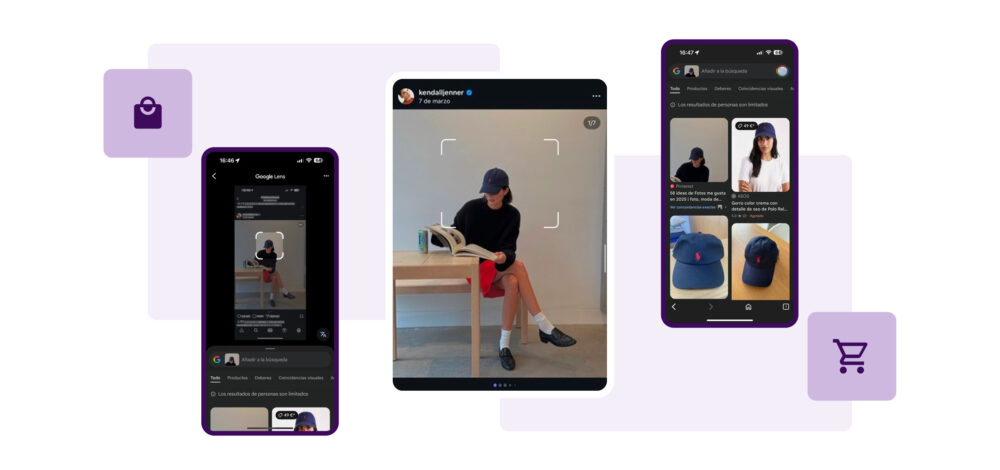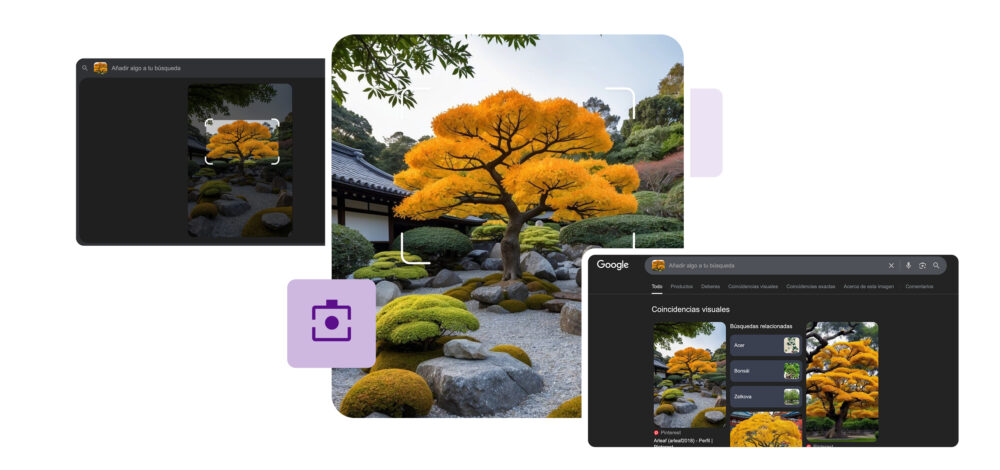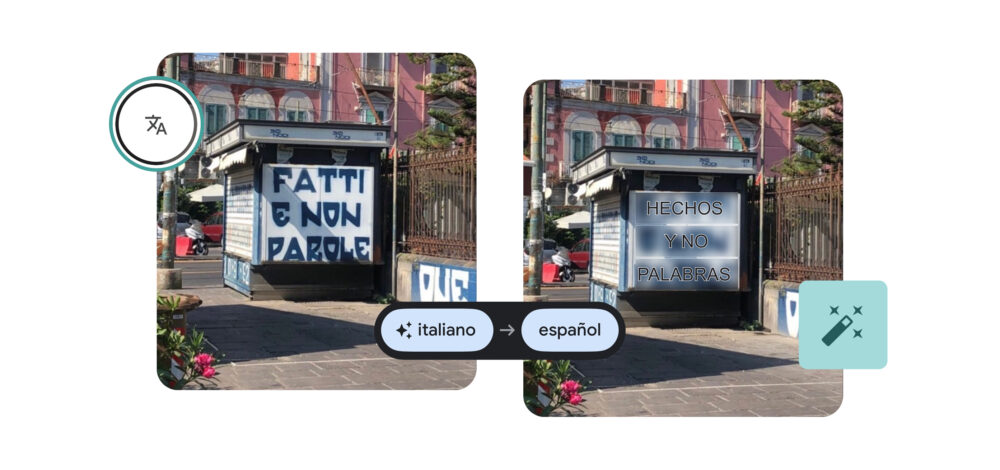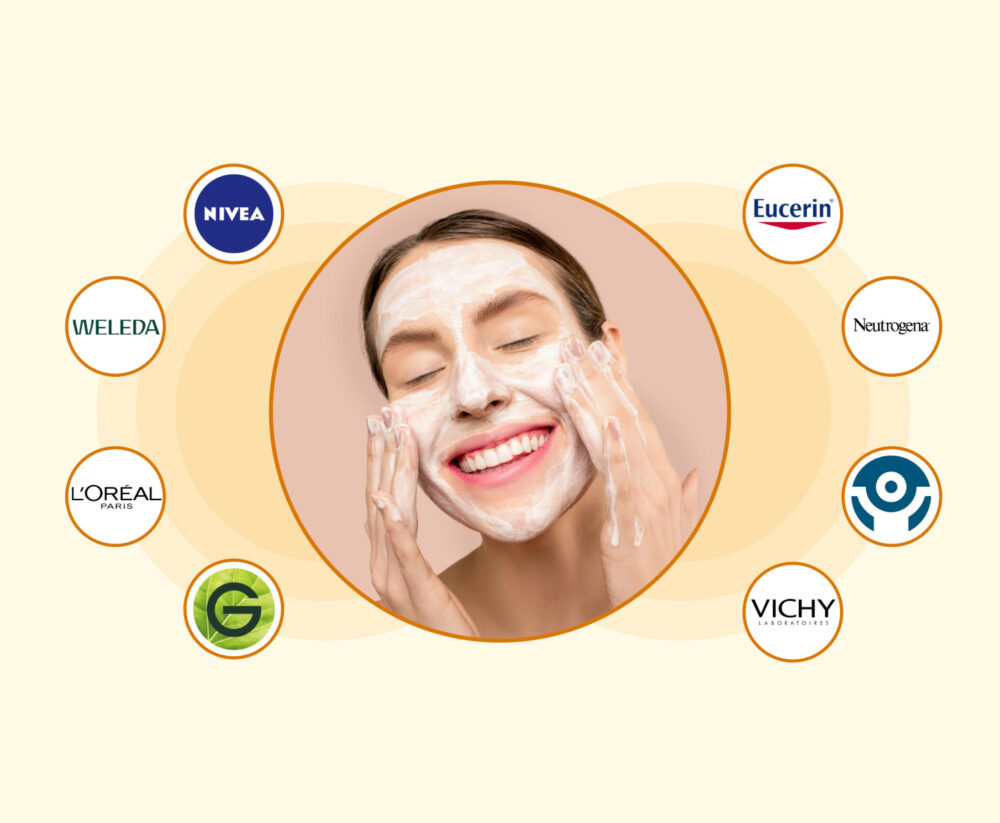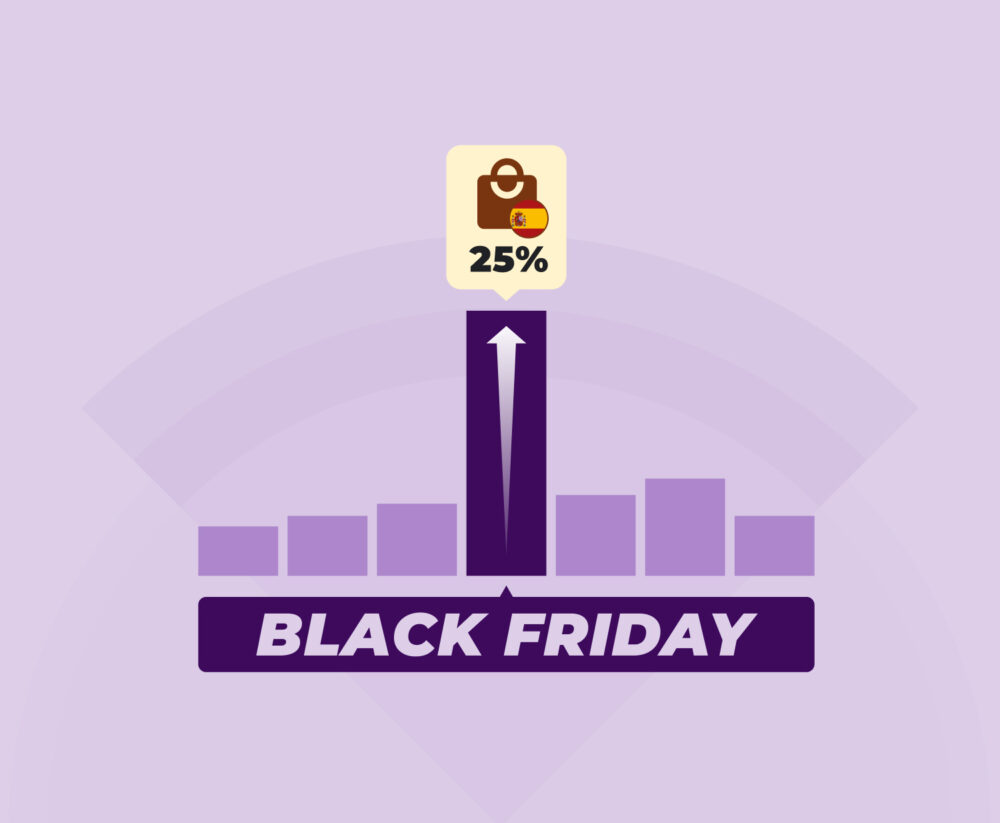The End of Words: How Google Lens is Transforming Product Discovery
A picture is worth a thousand words… and now it’s also a search bar
Picture this. You’re walking down the street and you see someone wearing some incredible trainers. They’re exactly what you’ve been looking for, but you don’t recognise the make or model. In the past, you’d have been stuck. You would try to describe what you saw in words: “white trainers with blue stripes and a thick sole”. The result was frustrating. The search results were nothing like what you were looking for.
Now, the situation is completely different. You take out your phone, open the camera, point it at the trainers, and within seconds, you have the name, brand, price and direct links to buy them. This isn’t science fiction. It’s the reality of visual search.
Image-based search is the natural evolution of text-based search. For decades, we’ve translated our visual needs into words. We described colours, shapes and styles in the hope that algorithms would correctly interpret our intentions. This language barrier disappears when the image directly becomes information.
Google Lens is leading this technological revolution. The tool bridges the gap between visual inspiration and an actual purchase in an extraordinary way. In this article, we will explore how this technology works, its impact on e-commerce and where the future of product discovery is heading.
What is Google Lens and how does it work?
Simply put, Google Lens is an image recognition technology that uses Artificial Intelligence to understand the world through your phone’s camera. Think of it as a “Shazam” for everything you see. Instead of listening to a song to identify it, Lens “sees” an object to give you information about it.
The technology behind this tool combines computer vision and machine learning. When you focus on an object, the system compares it with a massive database of images. The algorithms recognise patterns, textures, colours and shapes to determine what product you’re looking at. This whole process takes just a few seconds.
Real-world use cases demonstrate the tool’s versatility. You can search for a complete outfit you saw on social media. Just take a screenshot and use Lens to find similar items. You can also translate a menu in another language in real time, identify a dog’s breed or discover the name of that plant you love so much.
Usage data reflects the growing popularity of this technology. According to one study, Google Lens is used for more than 20 billion search queries every month. Adoption has grown, especially in categories like fashion, home decor and beauty. Younger users are leading this trend, but people of all ages are starting to incorporate visual search into their shopping habits. In fact, 1 in 4 visual searches on Lens has commercial intent. Google Lens has become one of the most powerful tools for product discovery and purchase.
The transformation of product discovery
The biggest impact of Google Lens lies in its ability to remove the friction between the moment of inspiration and the act of buying. Let’s analyse how it achieves this in everyday situations.
The end of the language barrier
We’ve all experienced the frustration of not finding the right words to describe something we want to buy. How do you explain the exact shade of green of a jacket? How do you describe the specific texture of a fabric? Words have limitations when it comes to capturing complex visual details.
This language barrier particularly affects fashion. Technical terms like “mandarin collar” or “halter neck” are not part of everyday vocabulary. Shoppers use approximate descriptions that generate imprecise results. “Long blue dress” can produce thousands of completely different options.
Google Lens eliminates this communication friction. The image contains all the necessary information. The exact colour, the texture of the material, the specific cut, the decorative details. Everything is captured visually, with no need for linguistic translation.
The democratisation of access to information is another important benefit. You don’t need to know specialised terminology to find what you’re looking for. A person with no fashion knowledge can identify an “oversized blazer with wide lapels” simply by photographing it. Technical expertise is no longer a barrier to discovery.
Impulse and inspirational buys
The inspiration to buy can strike at any time, anywhere. You’re at a friend’s house and you fall in love with their coffee machine. You see a perfect handbag in an Instagram post. You’re flicking through a home decor magazine and spot an armchair that would look perfect in your living room. Traditionally, there was a long path between that initial spark and the final purchase. You had to remember the product, search for it later and hope you were lucky enough to find it.
Google Lens dramatically shortens this journey. Inspiration instantly turns into action. You see something you like, photograph it, and within seconds you have options to buy. This process eliminates frustration and keeps the initial motivation alive.
Social media amplifies this phenomenon. Instagram and Pinterest are full of attractive outfits, decor and products. Lens allows you to turn these inspirational images into real purchasing opportunities. By simply drawing a circle around the desired product, you can access a search with millions of similar results. According to Google, a third of the users who have tried searching by circling an item on their screen have gone on to use this feature weekly.
Impulse buying finds its perfect tool in visual search. The immediacy removes the reflection time that traditionally moderated these decisions. You see it, you want it, you buy it. The process becomes seamless and natural.
The ultimate price comparison tool
Price comparison has always been tedious. You had to visit multiple shops, remember specific features and make rough mental comparisons. Google Lens completely automates this process.
A single image generates instant comparisons across multiple retailers. You can see the same product in different shops with up-to-date prices. You can also find similar alternatives at different price points. This transparency is a huge benefit to consumers.
Visual search is also changing the in-store shopping experience. Imagine you’re in a department store and find an appliance you’re interested in. Is it the best price? What do other users think of it?
With Google Lens, you can scan the product’s barcode or the item itself directly. In seconds, the app will show you a list of online sellers that stock it, allowing you to compare prices instantly. What’s more, it will give you access to video reviews, blog posts and opinions from other shoppers. This makes you an informed consumer, able to make the best purchasing decision right there at the point of sale.
Beyond fashion and furniture
Although fashion, furniture and home decor are the most obvious sectors, the usefulness of Google Lens extends to a much wider universe of products.
- DIY and repairs: Has a part of an appliance broken and you don’t know what it’s called? A photo with Lens can identify it and show you where to buy a replacement part.
- Books, music and film: Point it at a book cover to get a summary, reviews and options to buy. Do the same with a film poster to watch the trailer.
- Food and drink: Enjoyed a bottle of wine at a restaurant? Lens can identify the vintage, show you expert ratings and tell you where to buy it.
- Automotive: Photograph a car part to identify it and find tutorials on how to replace it.
The possibilities are practically limitless, making Lens a universal shopping assistant.
Impact on E-commerce and Retail
The traditional customer journey (discovery, consideration, purchase) now has a new and powerful entry point. A user can discover your brand without ever having heard of it, simply because they saw one of your products on the street and used Google Lens. Every physical product becomes a potential walking advertisement and a gateway to your online shop.
For retailers with physical stores, Google Lens is a fantastic tool for creating an omnichannel experience. A customer can be in your shop, scan a product to see if other colours are available online, read reviews from other shoppers or even watch a video on how to use it. This enriches the in-store experience and seamlessly connects your physical inventory with your digital catalogue.
Several major brands are already taking advantage of these capabilities. ASOS integrates visual search into its mobile app to make it easier to discover similar products. IKEA uses the technology to help users find furniture and accessories that complement their existing decor. Zara has implemented visual search features that allow users to photograph street style outfits and find similar items in its inventory. This strategy directly connects fashion inspiration with the brand’s commercial offering.
Integrations with established platforms multiply the impact. Google Shopping incorporates Lens results directly into its shopping experience. Pinterest Lens offers similar features and Amazon has developed StyleSnap, its own version of visual search for fashion. This competition accelerates innovation and improves the capabilities available to consumers and retailers.
Small businesses can also benefit from this technology. Google My Business allows local businesses to appear in visual search results when users photograph products available in their shops.
The future is visual: What’s next?
Google Lens is just the beginning. Visual search is continuing to evolve at breakneck speed, and we can already catch a glimpse of what’s next.
- Multisearch: Google has already implemented this feature. It allows you to combine an image with text to make ultra-specific searches. For example, you can take a photo of a shirt and add the text “tie” for Google to show you ties that would match it. Or you could photograph your dining table and search for “matching chairs”. Personalisation reaches a new level.
- Augmented Reality Integration: The next logical step is to merge visual search with augmented reality. Imagine you find a sofa with Lens. With a single click, you could project a 3D model of that sofa into your own living room via your camera to see how it looks. You could virtually “try on” a pair of trainers or sunglasses before buying them.
- Expansion into video: Another important trend. Google already allows you to search using short video clips. This feature is especially useful for products in motion or those that require a demonstration of how they are used.
- Automatic visual translation: This is being integrated into searches. Lens can read text in images, translate it and search for products in your local language. This feature removes geographical barriers in product discovery.
- More contextual and personalised search: Artificial Intelligence will continue to learn from your tastes and your environment. In the future, Lens could offer you proactive recommendations based on what it sees around you, perfectly tailored to your personal style.
The coming years will see a massive expansion of these capabilities. Visual search will become the predominant method for discovering products.
Conclusion: A new gateway to discovery
Google Lens has opened up a new gateway to product discovery that transcends the limitations of traditional language. This technology transforms instant visual inspiration into real purchasing opportunities, removing the friction that has historically separated desire from consumption.
The democratisation of access to commercial information benefits both consumers and businesses. What’s more, the versatility of this technology promises applications that we are only just beginning to imagine.
For businesses, adapting to this reality means fundamentally rethinking how consumers find and evaluate products. Visual search represents an opportunity to connect with audiences in completely new ways, but it also demands updated business strategies.
For consumers, this technology promises a future where finding exactly what we’re looking for is as simple as pointing and clicking. The end of words in product discovery marks the beginning of an era where visual inspiration instantly becomes a commercial reality.
Next time you see something you like, don’t try to describe it. Just point your camera and let the magic happen.

